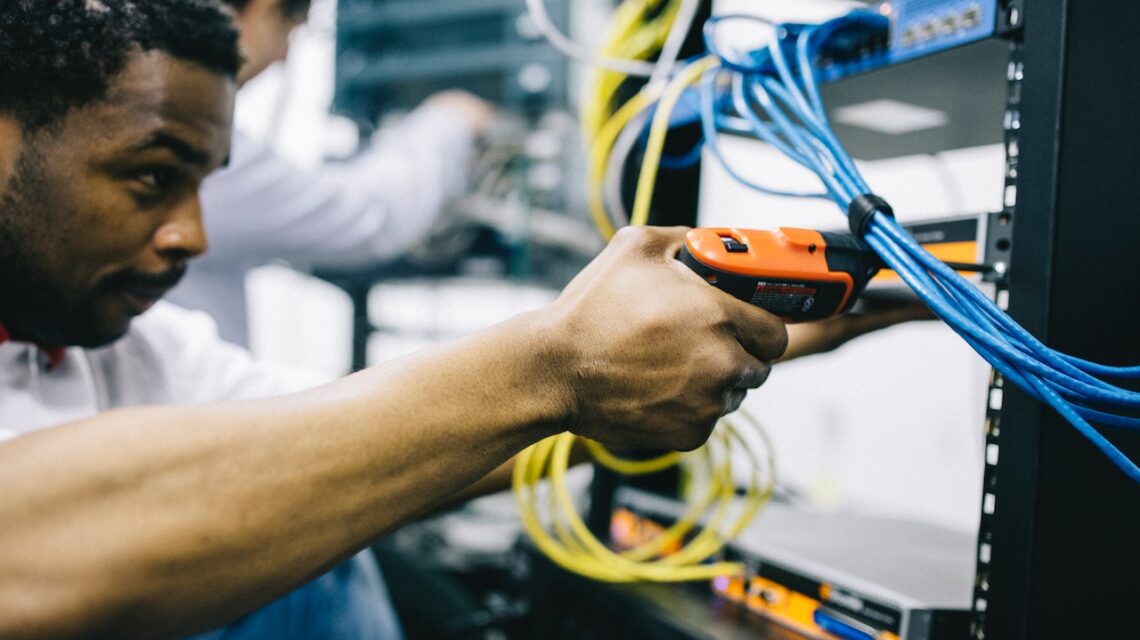Romex wire, also known as non-metallic (NM) cable, is a brand of electrical cable that is typically used in residential and commercial construction. This type of wire is usually made up of two or more insulated wires bundled together, along with a bare copper grounding wire. All of these wires are then encased in a flexible plastic cover and can be used to safely conduct electricity through a circuit.
Romex wire is widely used for indoor electrical applications, such as powering lighting fixtures, outlets, and appliances. Thanks to its durability and ease of installment, Romex wire is often a go-to choice for a range of building projects for electricians and builders.
However, Romex wire’s wide usage as a high-quality wiring option can make it more expensive compared to other types of electrical wire. In this blog post, we will explore the factors driving the high cost behind the Romex wire pricing.
How Is Romex Wire Used?
Romex wire is generally used to help provide power in electric fixtures like electrical outlets, lighting fixtures, and other electrical devices. Thanks to its versatility, ease- of-installation, and cost-effectiveness, Romex wire can commonly be found in the following home features:
- Power outlets. Romex wire is used to provide power to electrical outlets throughout a building by connecting three different wire types: a hot wire, a neutral wire and ground wire to safely conduct the electric circuit.
- Lighting. Romex wire is used to power light fixtures, including ceiling lights, wall sconces, and other types of lighting. Similar to power outlets, the Romex wire is run from the electrical panel to the light fixture. The wires inside the Romex are connected to the corresponding wires in the light fixture to conduct electricity through the circuit.
- Appliances. Romex wire is used to connect appliances, such as stoves, refrigerators, and washing machines, to the electrical system using the same circuit management system as other electric fixtures.
- HVAC systems. Romex wire is used to connect heating, ventilation, and air conditioning (HVAC) systems to the electrical system.
Overall, Romex wire is frequently used as a reliable and efficient solution for providing power to a variety of electrical devices and systems. Its versatility makes it an ideal construction material for residential and commercial projects alike.
The Cost of Romeo Wire
There are several contributing factors that create an increase in the pricing for Romex wire. First, Romex wire is made with copper, the gold of the scrap metal industry, which tends to be a more expensive construction material. Like other metals, copper prices fluctuate daily depending on market conditions and demand.
As a metal, copper is highly sought after for its multi-functional usage, especially as an electric conductor. It is also a scarce resource— it can be challenging and expensive to extract and refine. All in all, limited supply and high demand make this metal extremely valuable.
That also means how thick or long the wire is can affect the price. Thicker wires and longer lengths require more copper and insulation material, which increases the overall cost.
Furthermore, the insulation and casing used to manufacture Romex wire require additional materials and processing. This adds to the overall production cost for Romex wire.
Lastly, to ensure quality and safety standards are met, Romex wire undergoes rigorous testing and certification processes. These costs are usually built into the consumer price and paid for through the end product.
How to Recycle Romex Wire
Romex wire, like any other copper wire, can be recycled to extract its valuable metal content. Here are some steps on how you can recycle Romex wire:
- Strip the outer jacket. Remove the outer plastic sheath from the Romex wire. You can use a wire stripper or a utility knife to do this. Be careful not to cut or damage the inner wires.
- Separate the inner wires. Once you’ve removed the outer jacket, you can separate the inner wires. You can use a wire stripper to separate the inner wires from the insulation coating.
- Sort the metal. Sort the copper wires by grade or type, based on their thickness and quality. You can use a magnet to differentiate between metal types. As a non-ferrous metal, copper wires are non-magnetic and will not stick to the magnet.
- Sell the scrap. Take your sorted copper wire to a scrap yard or metal recycling center to sell it for cash. The price you will receive for your copper wire will depend on the current market price for copper, which can fluctuate. It’s a good idea to look up scrap prices, which fluctuate daily, before taking your metal scrap to market for a fair price.
You’ll also want to make sure your scrap metal recycling center accepts Romex wire beforehand. At Gardner Metal Recycling, we’ll not only accept various electronics, cables, and more— we’ll also help you sort and separate them to ensure you get the best deal possible on your metal scrap.
Use Gardner Metal Recycling for Competitive and Fair Scrap Metal Pricing
Gardner Metal Recycling offers a win-win solution for recycling your Romex wire and other scrap metal. With over 60 years of experience, we provide comprehensive commercial scrap metal recycling solutions customized to fit the needs of businesses and individuals in the Central Texas community.
As a family-run business, we pride ourselves on providing environmentally responsible scrap metal recycling programs to help you maximize your profits and protect the environment. Whether you’re a contractor, manufacturing or industrial service provider, or utility service provider, in need of a pick-up or dumpster rental service, we offer fair prices and flexible services to help improve your bottom line.
Contact us for a price quote or bring your Romex wire and other metal scrap today for competitive, fair, and transparent pricing today.

